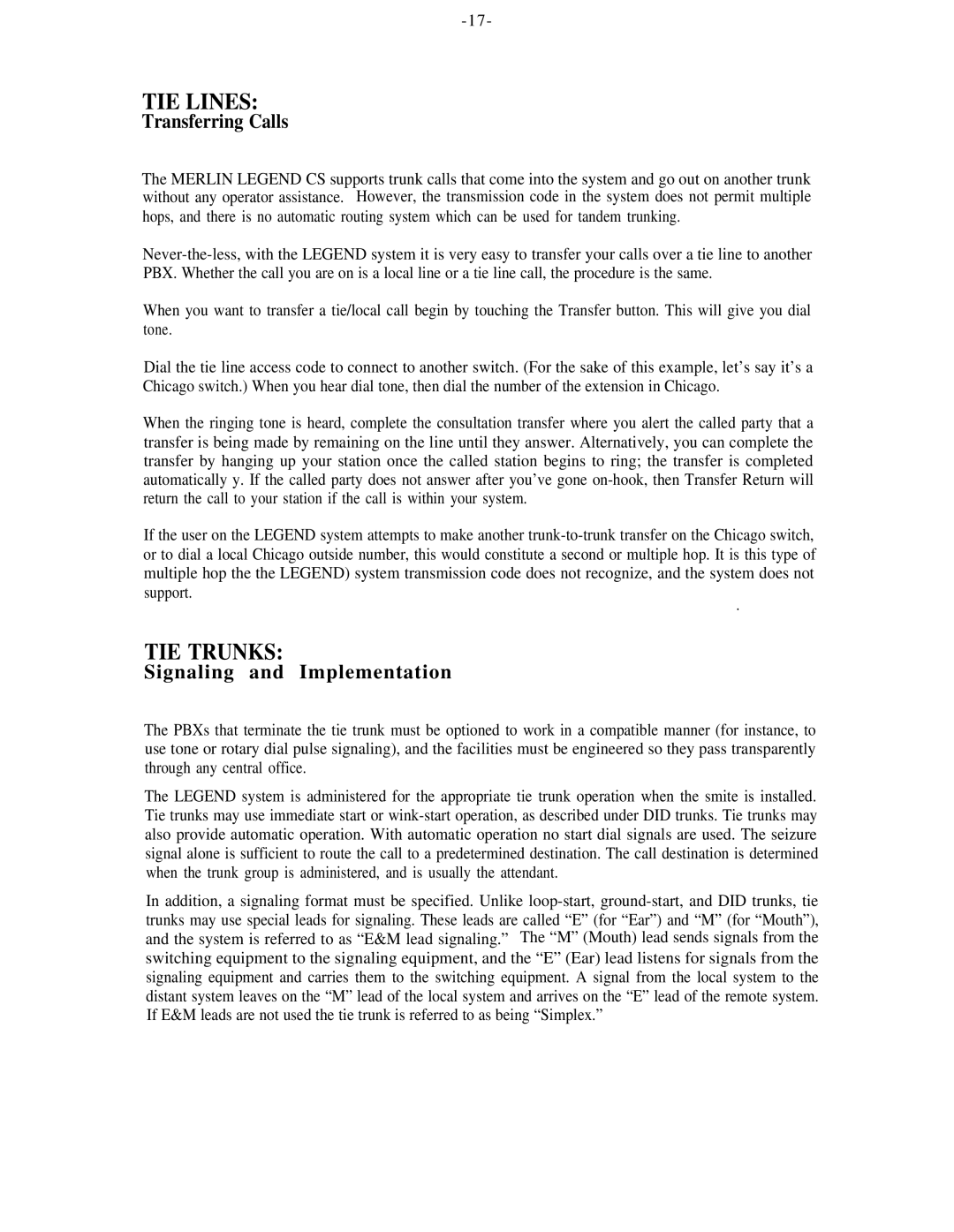TIE LINES:
Transferring Calls
The MERLIN LEGEND CS supports trunk calls that come into the system and go out on another trunk without any operator assistance. However, the transmission code in the system does not permit multiple hops, and there is no automatic routing system which can be used for tandem trunking.
When you want to transfer a tie/local call begin by touching the Transfer button. This will give you dial tone.
Dial the tie line access code to connect to another switch. (For the sake of this example, let’s say it’s a Chicago switch.) When you hear dial tone, then dial the number of the extension in Chicago.
When the ringing tone is heard, complete the consultation transfer where you alert the called party that a transfer is being made by remaining on the line until they answer. Alternatively, you can complete the transfer by hanging up your station once the called station begins to ring; the transfer is completed automatically y. If the called party does not answer after you’ve gone
If the user on the LEGEND system attempts to make another
support.
.
TIE TRUNKS:
Signaling and Implementation
The PBXs that terminate the tie trunk must be optioned to work in a compatible manner (for instance, to use tone or rotary dial pulse signaling), and the facilities must be engineered so they pass transparently through any central office.
The LEGEND system is administered for the appropriate tie trunk operation when the smite is installed. Tie trunks may use immediate start or
In addition, a signaling format must be specified. Unlike
